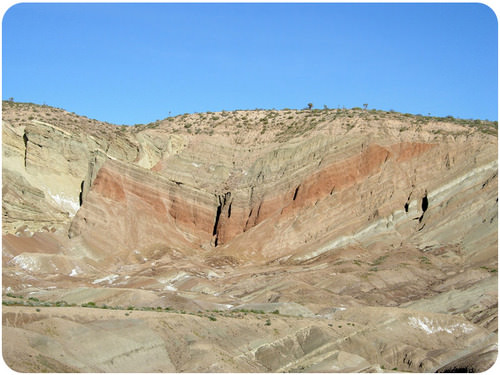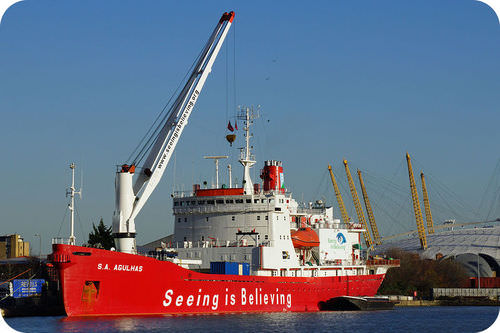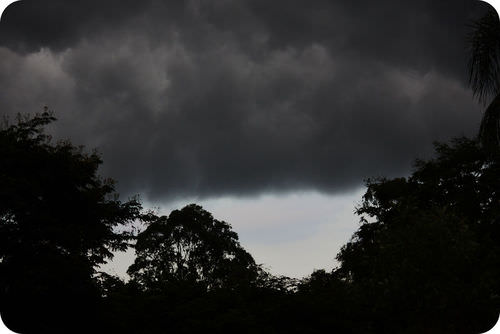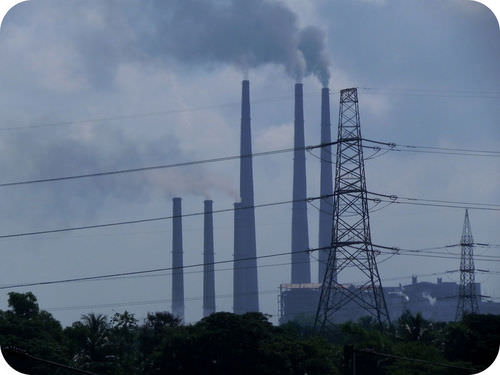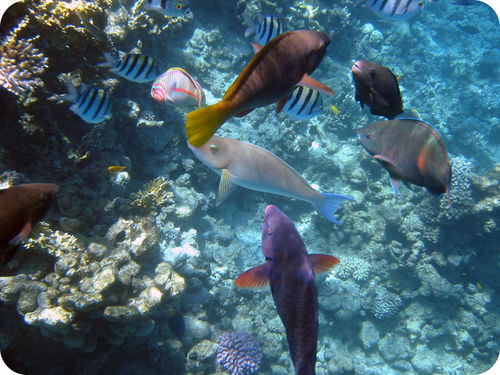1.2 Earth Science and Its Branches
1.2 Earth Science and Its Branches
Lesson Objectives
- Describe Earth Science and its branches.
- Identify the field of geology as a branch of Earth Science that deals with the rocks and minerals of Earth.
- Describe the field of oceanography as a branch of Earth Science that explores the ocean.
- Define the field of meteorology as a branch of Earth Science that deals with the atmosphere.
- Understand that astronomy is a branch of Earth Science that studies our solar system and universe.
- List some of the other branches of Earth Science, and how they relate to the study of Earth.
Vocabulary
- astronomy
- geology
- meteorology
- oceanography
Introduction
Earth Science is the study of all aspects of our planet Earth. Earth Science is not just about the molten lava, icy mountain peaks, steep canyons and towering waterfalls of the continents. Earth Science includes the atmosphere and oceans. The field also looks out into the solar system, galaxy, and universe. Earth scientists seek to understand the beautiful planet on which we depend (Figure below).
Earth as seen from Apollo 17.
Different branches of Earth Science study one particular part of Earth. Since all of the branches are connected, specialists work together to answer complicated questions. Let’s look at some important branches of Earth Science.
Geology
Geology is the study of the solid Earth. Geologists study how rocks and minerals form. The way mountains rise up is part of geology. The way mountains erode away is another part. Geologists also study fossils and Earth’s history. There are many other branches of geology. There is so much to know about our home planet that most geologists become specialists in one area. For example, a mineralogist studies minerals, as seen in (Figure below).
(A) Mineralogists focus on all kinds of minerals. (B) Seismographs are used to measure earthquakes and pinpoint their origins.
Some volcanologists brave molten lava to study volcanoes. Seismologists monitor earthquakes worldwide to help protect people and property from harm (Figure above). Paleontologists are interested in fossils and how ancient organisms lived. Scientists who compare the geology of other planets to Earth are planetary geologists. Some geologists study the Moon. Others look for petroleum. Still others specialize in studying soil. Some geologists can tell how old rocks are and determine how different rock layers formed. There is probably an expert in almost anything you can think of related to Earth!
Geologists might study rivers and lakes, the underground water found between soil and rock particles, or even water that is frozen in glaciers. Earth scientists also need geographers who explore the features of Earth’s surface and work with cartographers, who make maps. Studying the layers of rock beneath the surface helps us to understand the history of planet Earth (Figure below).
These folded rock layers have bent over time. Studying rock layers helps scientists to explain these layers and the geologic history of the area.
Oceanography
Oceanography is the study of the oceans. The word oceanology might be more accurate, since “ology” is “the study of.” “Graph” is “to write” and refers to map making. But mapping the oceans is how oceanography started.
More than 70% of Earth’s surface is covered with water. Almost all of that water is in the oceans. Scientists have visited the deepest parts of the ocean in submarines. Remote vehicles go where humans can't. Yet much of the ocean remains unexplored. Some people call the ocean “the last frontier.”
Humans have had a big impact on the oceans. Populations of fish and other marine species have been overfished. Contaminants are polluting the waters. Global warming is melting the thick ice caps and warming the water. Warmer water expands and, along with water from the melting ice caps, causes sea levels to rise.
This research vessel is specially designed to explore the seas around Antarctica.
There are many branches of oceanography. Physical oceanography is the study of water movement, like waves and ocean currents (Figure above). Marine geology looks at rocks and structures in the ocean basins. Chemical oceanography studies the natural elements in ocean water. Marine biology looks at marine life.
Climatology and Meteorology
Meteorologists don’t study meteors — they study the atmosphere! The word “meteor” refers to things in the air. Meteorology includes the study of weather patterns, clouds, hurricanes, and tornadoes. Meteorology is very important. Using radars and satellites, meteorologists work to predict, or forecast, the weather (Figure below).
Meteorologists can help us to prepare for major storms or know if today is a good day for a picnic.
The atmosphere is a thin layer of gas that surrounds Earth. Climatologists study the atmosphere. These scientists work to understand the climate as it is now. They also study how climate will change in response to global warming.
The atmosphere contains small amounts of carbon dioxide. Climatologists have found that humans are putting a lot of extra carbon dioxide into the atmosphere. This is mostly from burning fossil fuels. The extra carbon dioxide traps heat from the Sun. Trapped heat causes the atmosphere to heat up. We call this global warming (Figure below).
Carbon dioxide released into the atmosphere is causing global warming.
Environmental Science
Environmental scientists study the ways that humans affect the planet we live on. We hope to find better ways of living that can also help the environment. Ecologists study lifeforms and the environments they live in (Figure below). They try to predict the chain reactions that could occur when one part of the ecosystem is disrupted.
In a marine ecosystem, coral, fish, and other sea life depend on each other for survival.
Astronomy
Astronomy and astronomers have shown that the planets in our solar system are not the only planets in the universe. Over 530 planets were known outside our solar system in 2011. And there are billions of other planets! The universe also contains black holes, other galaxies, asteroids, comets, and nebula. As big as Earth seems, the entire universe is vastly more enormous. Earth is just a tiny part of our universe.
Astronomers use many tools to study things in space. Earth-orbiting telescopes view stars and galaxies from the darkness of space (Figure below). They may have optical and radio telescopes to see things that the human eye can't see. Spacecraft travel great distances to send back information on faraway places.
Scientists are using telescopes to search for other planets that may have conditions favorable for life. The places they can look are near our solar system in our galaxy.
Astronomers ask a wide variety of questions. How do strong bursts of energy from the Sun, called solar flares, affect communications? How might an impact from an asteroid affect life on Earth? What are the properties of black holes? Astronomers ask bigger questions too. How was the universe created? Is there life on other planets? Are there resources on other planets that people could use? Astronomers use what Earth scientists know to make comparisons with other planets.
Lesson Summary
- Earth science includes many fields of science related to our home planet.
- Geology is the study of Earth's material and structures and the processes that create them.
- Oceanography is the study of the oceans: water movement, chemistry and the ocean basins among other things.
- Meteorologists study the atmosphere including climate and weather.
- Environmental science deals with the effects people have on the environment.
- Astronomers study Earth's larger environment: the solar system, galaxy, and universe that our planet resides in.
Lesson Review Questions
Recall
1. What are three major branches of Earth Science?
2. What branch of science deals with stars and galaxies beyond Earth?
3. List important functions of Earth scientists.
4. What does a meteorologist study?
Apply Concepts
5. A glacier is melting. What are all of the scientists you can think of who might be involved in studying this glacier? What would each of them do?
Think Critically
6. Design an experiment that you could conduct in any branch of Earth Science. Identify the independent variable and dependent variable.
Points to Consider
- Why is Earth Science so important?
- Which branch of Earth Science would you most like to explore?
- What is the biggest problem that we face today? Which Earth scientists may help us to solve the problem?
- What other branches of science or society are related to and necessary for Earth Science?
- Log in or register to post comments
- Email this page



